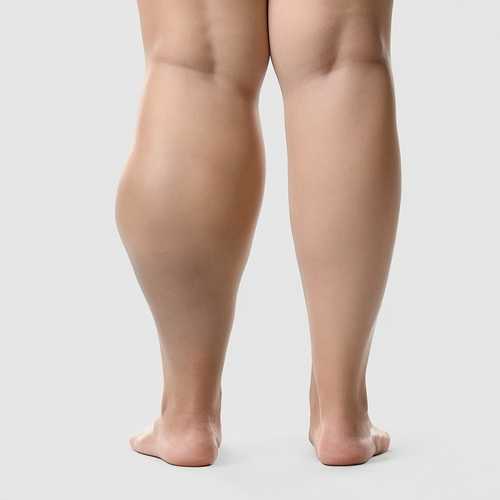
lymphedema
Expert Physiotherapy at Home
Personalised Recovery Programmes
Trusted Physiotherapists. Real Results.
Patient Testimonials
Our Medical Team
Meet some of our experienced and dedicated healthcare professionals
Dr. Lokesh G
15 Years Experience
SPECIALIZATIONS
Experienced in Neurological rehabilitation, Orthopaedic physiotherapy, and Paediatric care
Delivers structured, high-impact treatment plans across neuro, ortho, and paediatrics—ensuring safety, comfort, and measurable recovery at every stage.
Dr. Mohammed Sarwar
15 Years Experience
SPECIALIZATIONS
Experienced in Neurological rehabilitation, Adult physiotherapy, and Paediatric care
Combines deep clinical expertise with a compassionate approach, supporting both adults and children through neuro and physical rehabilitation that promotes long-term independence and recovery.
Dr. Nelapati Divya
12 Years Experience
SPECIALIZATIONS
Skilled in Orthopaedic rehabilitation, Manual therapy techniques, and Paediatric physiotherapy
Brings a personalised, hands-on approach to healing—combining structural expertise with paediatric sensitivity to restore movement, relieve pain, and improve everyday function.
Dr. Naveen V
3 Years Experience
SPECIALIZATIONS
Trained in Pain management, Cardiac and Orthopaedic rehabilitation, Neurological care, and Neural tissue mobilisation
Brings clinical precision and empathy together—designing science-backed recovery protocols for pain relief, nerve mobilisation, and cardio-neuro-ortho rehabilitation across all age groups
Dr. Miloni Savla
2 Years Experience
SPECIALIZATIONS
Holds an MPT in Orthopaedics with a focus on Musculoskeletal rehabilitation and strength recovery
Delivers focused, movement-oriented therapy grounded in orthopaedic science—helping patients rebuild strength, restore function, and return to daily life with confidence

introduction to lymphedema
Lymphedema is a chronic condition resulting from the abnormal accumulation of lymphatic fluid in the tissues, leading to swelling. Most commonly affecting the arms or legs, lymphedema occurs when the lymphatic system—responsible for fluid balance and immune defense—becomes impaired. Although not life-threatening, untreated lymphedema can lead to significant discomfort and reduced quality of life, necessitating timely management and care.
recognizing the warning signs of lymphedema
The hallmark symptom of lymphedema is swelling in the affected limb, which may begin as mild and intermittent but can progressively worsen to become severe and persistent. Individuals with lymphedema often experience a sense of heaviness or tightness in the swollen limb, along with reduced mobility. Over time, the skin may become thickened or hardened, and recurrent infections like cellulitis are common. Pain or discomfort in the affected area can further interfere with daily activities, making early recognition and treatment essential.
unveiling the underlying causes of lymphedema
Lymphedema can be categorized into primary and secondary types. Primary lymphedema is a rare, hereditary condition caused by congenital abnormalities in the lymphatic system. In contrast, secondary lymphedema is more prevalent and occurs due to external factors such as surgery, radiation therapy, infections, or trauma that damages the lymphatic vessels or nodes. For instance, breast cancer patients often develop lymphedema following lymph node removal or radiation therapy, highlighting the connection between cancer treatments and this condition.
risk factors for lymphedema you should know
Certain factors increase the likelihood of developing lymphedema. These include undergoing cancer treatments like radiation or surgery, obesity, chronic venous insufficiency, and a history of infections that impact the lymphatic system. Additionally, individuals with a family history of primary lymphedema are at an elevated risk. Being aware of these risk factors allows for earlier detection and proactive management, reducing the chances of complications.
simple strategies for lymphedema prevention
While not all instances of lymphedema can be avoided, specific strategies can help reduce the risk. Maintaining a healthy body weight is vital, as excess weight puts additional strain on the lymphatic system. Practicing proper hygiene and skincare minimizes the risk of infections, while regular exercise helps improve lymphatic flow. For those who have undergone surgery or radiation, early monitoring for signs of swelling and seeking prompt medical attention are crucial steps in prevention.
comprehensive diagnosis and treatment for lymphedema
Diagnosing lymphedema typically involves a combination of clinical examinations and imaging studies like lymphoscintigraphy or ultrasound, which help assess the lymphatic system’s function. Treatment is tailored to manage symptoms and prevent complications. Common approaches include manual lymphatic drainage (a specialized massage technique), compression therapy, therapeutic exercises, and meticulous skincare to avoid infections. In severe cases, surgical interventions such as lymphatic bypass or lymph node transfer may be necessary to improve lymphatic drainage and reduce swelling.
the role of physiotherapy in lymphedema healing
Physiotherapy is integral to the effective management of lymphedema. Therapists use manual lymphatic drainage techniques to stimulate lymph flow and alleviate swelling. Tailored exercise programs help improve mobility, strengthen muscles, and support fluid drainage. Additionally, physiotherapists guide patients on the proper use of compression garments and educate them on lifestyle modifications to minimize symptoms. By addressing both the physical and functional challenges of lymphedema, physiotherapy significantly enhances patients’ comfort, mobility, and overall quality of life.
how portea empowers patients
At Portea, we understand the complexities of living with lymphedema and provide compassionate care tailored to individual needs. Our home-based physiotherapy services focus on helping patients regain strength, independence, and mobility in a comfortable and supportive environment.
We also specialize in delivering expert physiotherapy services for conditions such as post-surgical rehabilitation, arthritis, neuro-rehabilitation, sports injuries, orthopedic care, physiotherapy for elderly individuals, and respiratory disorders—all conveniently provided at home. With our dedicated and experienced team, we ensure every patient receives personalized, professional care for a smoother recovery journey.
portea’s other physiotherapy services for various medical conditions
faq’s on lymphedema
1. Can lymphedema develop suddenly?
While lymphedema generally progresses over time, it can develop suddenly in some cases, particularly after surgery, radiation, or trauma that affects the lymphatic system. Sudden swelling or changes in limb appearance should be evaluated by a healthcare professional.
2. Is lymphedema a lifelong condition?
Yes, lymphedema is typically a lifelong condition, but with proper management, it can be controlled. Consistent care, including physiotherapy, compression therapy, and lifestyle adjustments, can help minimize symptoms and prevent further complications.
3. Can exercise help with lymphedema?
Yes, exercise is beneficial for individuals with lymphedema. Specific exercises can help improve lymphatic flow, reduce swelling, strengthen muscles, and maintain mobility. However, it is essential to follow a program designed by a healthcare provider or physiotherapist to ensure it’s safe and effective.
4. Are there any dietary changes that can help manage lymphedema?
While no specific diet can cure lymphedema, maintaining a healthy weight and consuming a balanced diet can help reduce the strain on the lymphatic system. A diet high in fiber and low in sodium can also help with fluid retention.
5. How does compression therapy work for lymphedema?
Compression therapy uses specialized garments, such as compression sleeves or stockings, to apply gentle pressure to the affected area. This helps to reduce swelling by encouraging lymphatic fluid drainage and preventing the fluid from accumulating in the tissues.
6. Can lymphedema cause long-term complications?
If left untreated, lymphedema can lead to long-term complications such as chronic skin infections (like cellulitis), fibrosis (thickening or scarring of tissue), or decreased mobility. Managing symptoms early on helps prevent these issues.
7. Is there a connection between lymphedema and cancer treatments?
Yes, individuals who undergo cancer treatments, particularly those involving surgery or radiation, are at an increased risk of developing secondary lymphedema. This is due to the potential damage to the lymphatic system during treatment.
8. What should I do if I notice early signs of lymphedema?
If you notice swelling, heaviness, or tightness in a limb, it’s important to seek medical advice early. Early detection and intervention, such as starting physiotherapy or using compression garments, can significantly reduce the severity of the condition.
9. Can lymphedema affect both arms or legs at the same time?
While lymphedema often affects one limb initially, it is possible for both arms or legs to become affected, especially if the underlying cause, such as surgery or infection, impacts both sides of the body.
10. Can lymphedema be managed at home?
Yes, lymphedema can be managed at home through a combination of self-care techniques like compression therapy, regular exercise, good skincare, and monitoring for signs of infection. However, it’s essential to work with a healthcare provider or physiotherapist to ensure proper management.
Doctor Consultation
Nursing
Physiotherapy
Trained Attendant
Elder Care
Mother & Baby Care
Lab Tests
Medical Equipment
Speciality Pharma
Critical Care











